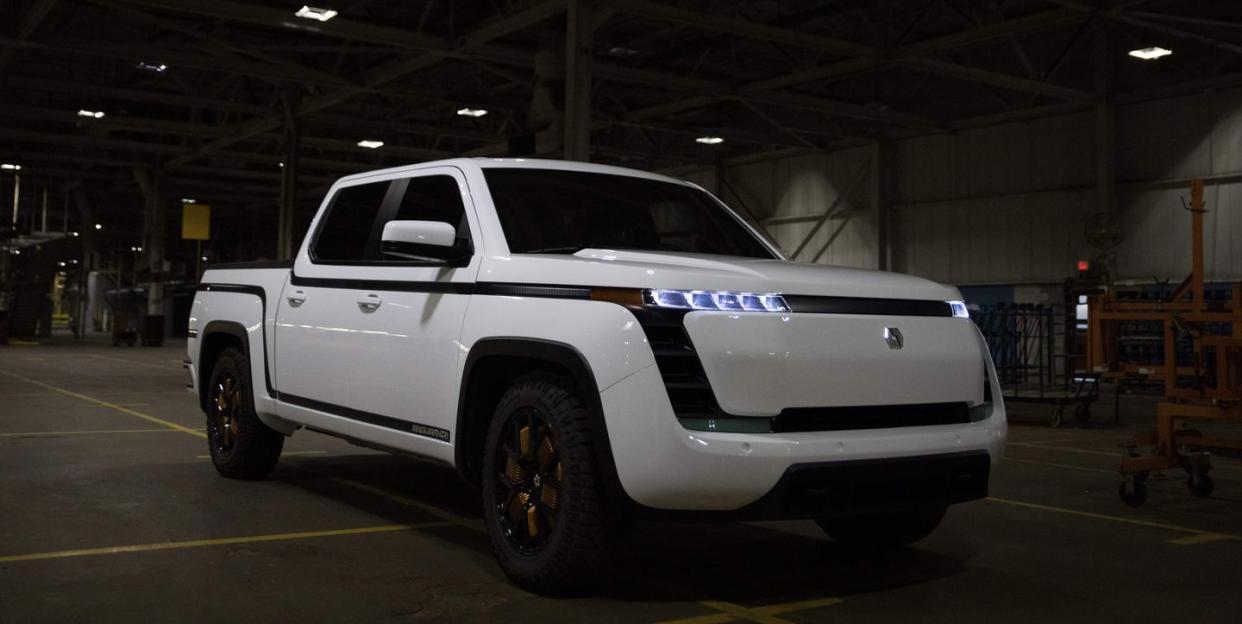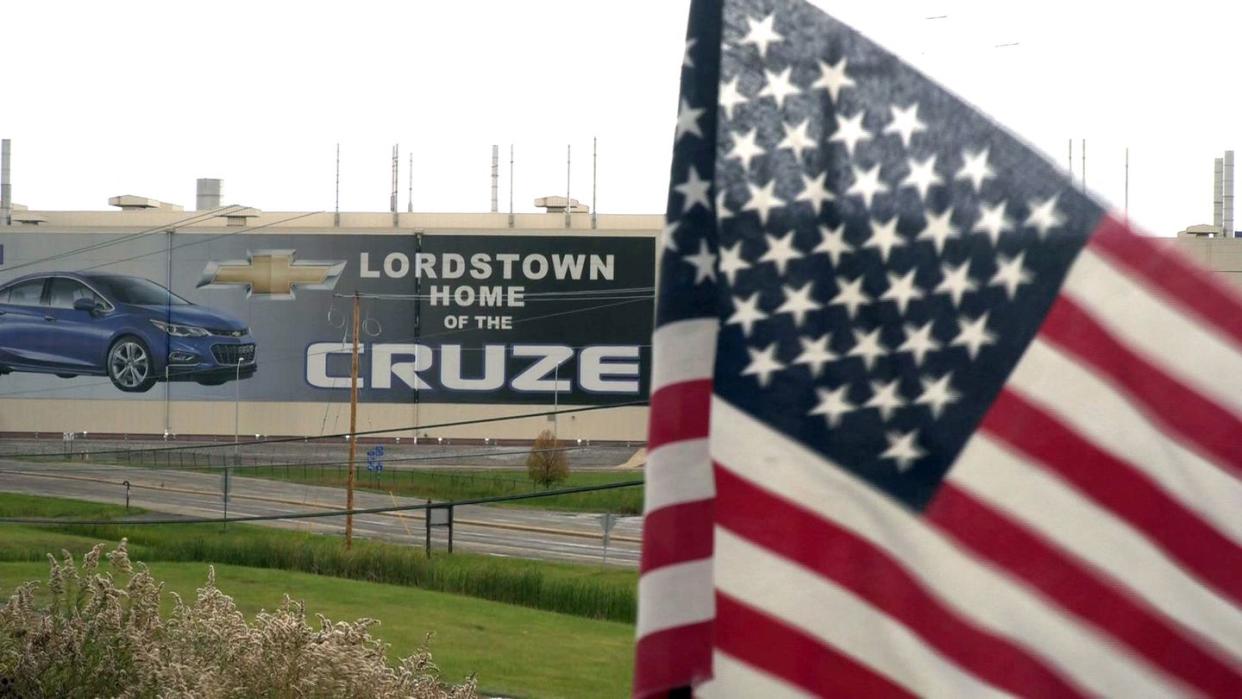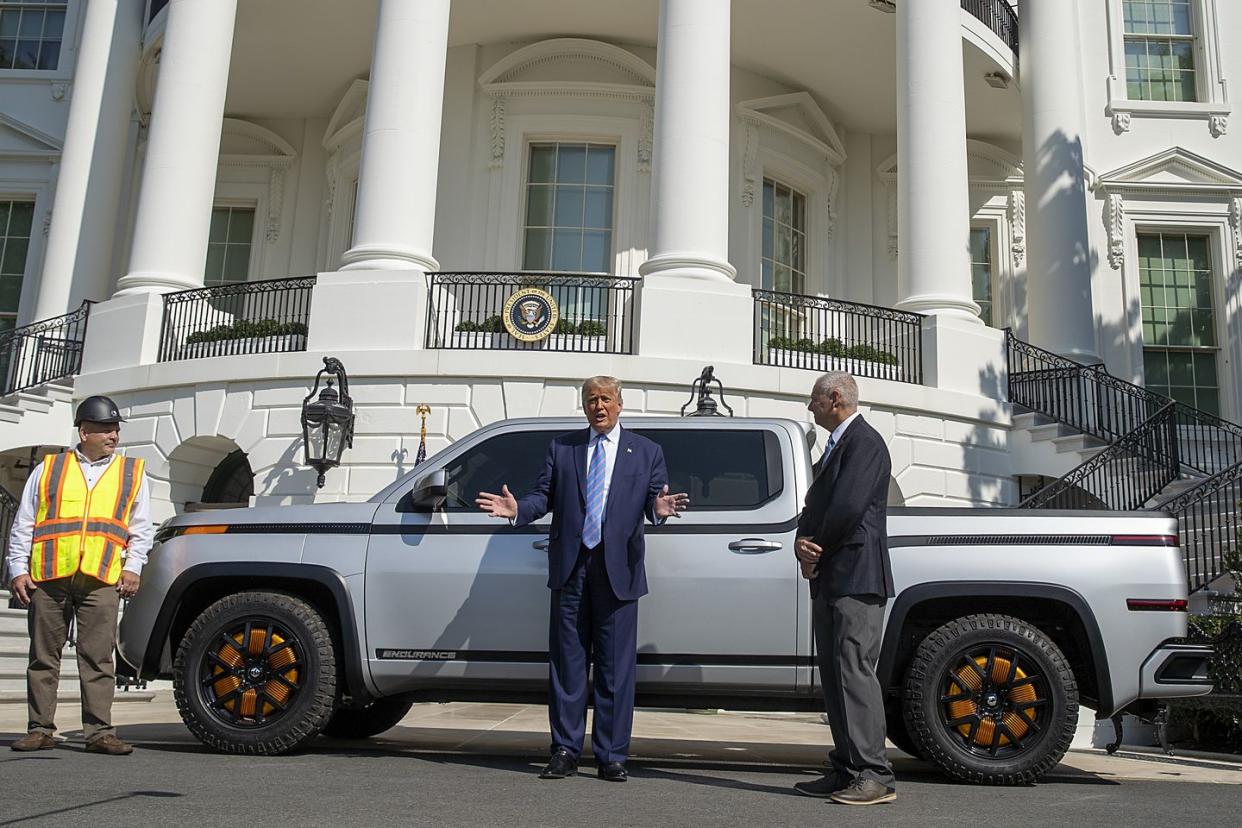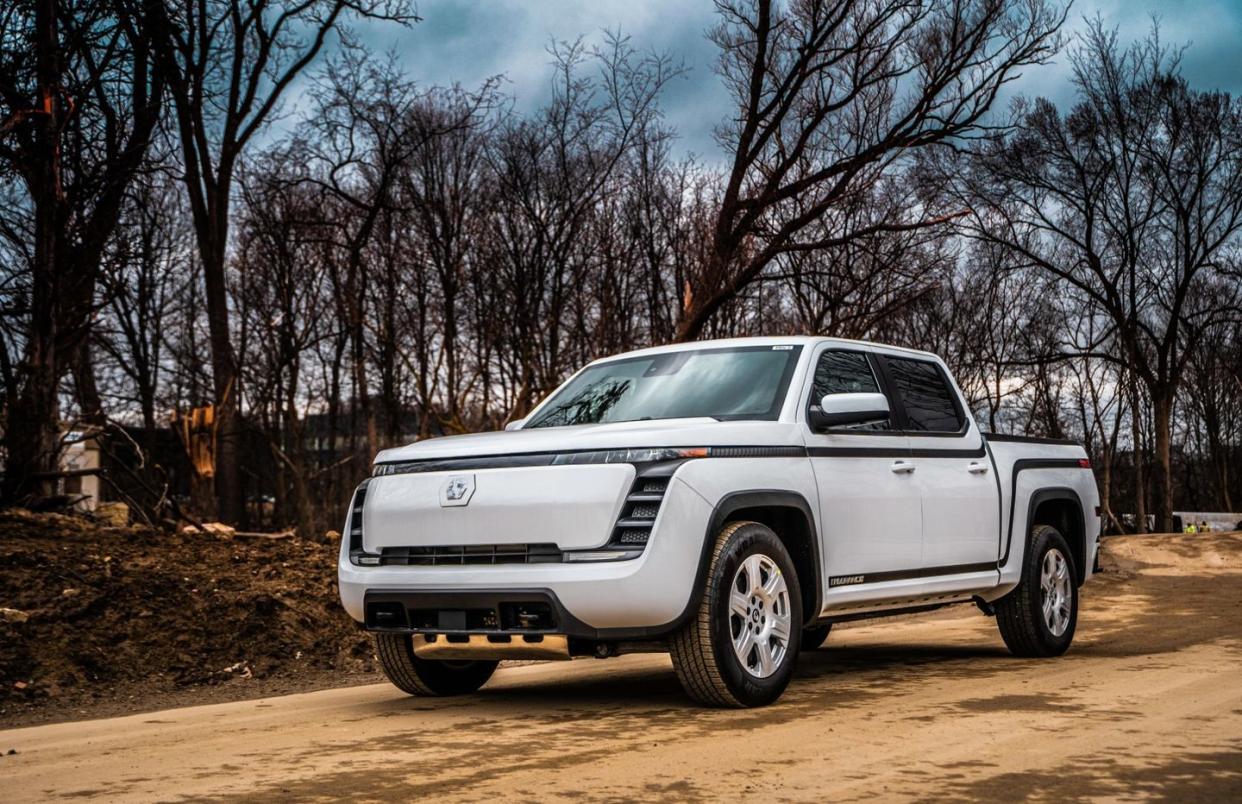The Lordstown Endurance Doesn't Have What It Takes

A drive of the Lordstown Endurance in best experienced in a vacuum: A space with no EV rivals, no market reality to intrude on the steady hum of four utterly pointless wheel hub motors.
This Michigan spin in a pre-production Endurance, together with a brave face shown by company executives—including newly appointed CEO Edward Hightower — forces me to at least reconsider Lordstown, Ohio’s troubled EV start-up. But any illusion quickly dissolves, as it has from the beginning, when Lordstown’s founders and political enablers first began to play on the hopes and dreams of struggling workers and residents of Ohio’s Mahoning Valley. Here in 2022, the questions still hover like gnats around a company that appeared a Hail Mary play from the start, and has become a fumbled football of unmet promises, financial struggles and shenanigans, and revolving-door management.
The ascension of Hightower to CEO—a veteran executive engineer of Ford, GM, and BMW, and the first African-American automaking chief in more than a century—at least put an experienced automaker in charge.
Yet since it went public in a SPAC merger, the company burned through about $700 million. And Lordstown was recently forced to sell its most valuable asset for a nearly $260 million lifeline: Its former General Motors factory in Ohio, to Taiwan’s Hon Hai Technology Group. It’s better known as Foxconn, assembler of the iPhone, last seen bamboozling Wisconsin on an epic scale with phony promises of a $10 billion LCD factory and American jobs. Then-President Trump helped broker the Foxconn folly with the Wisconsin GOP, shoveled dirt at a groundbreaking, and trumpeted this midwest Potemkin Village as “the eighth wonder of the world.” Going full circle, Trump’s public browbeating of General Motors helped lay the ground for Lordstown Motors.

Moving on to Ohio, Foxconn now plans to build the Endurance in a joint partnership with Lordstown. Foxconn claims it’s going to build Fiskers there, too. How many Lordstown trucks? At this drive for North American Car, Truck and Utility of the Year candidates, Hightower confirms the company plans to deliver 50 trucks by year-end, and roughly 450 more through the first half of 2023. One customer has publicly broken cover, with the Port of San Diego agreeing to buy…wait for it…two Endurances. This trickle of trucks will spring from a former GM factory that churned out 290,000 Chevy Cruzes in 2014, and still lost money doing it. To fill that galaxy-size gap, Foxconn plans to build Fisker Pears, or maybe develop EVs of its own. If none of this adds up to the next Tesla, maybe they can all convert Lordstown into the world’s biggest indoor pickleball facility.
Lordstown’s very birth struck some observers at the time (including myself) as cynical expediency: A feel-good bid to save Ohio manufacturing jobs, at the shuttered GM plant that Trump was compulsively attacking the company and CEO Mary Barra for closing. Lordstown’s (now-departed) founder and CEO Steve Burns was an underfunded automaking newbie. But GM essentially gifting Burns its oft-beleaguered Lordstown plant—where it had produced everything from Chevy Vegas to Cruzes from 1966 to 2019—got Trump off their back. The President got to boast at a White House photo op with the Endurance. By summer 2020, Mike Pence rode onto a Lordstown stage in an Endurance prototype to throw more shade at GM, and raise the hopes of blue-collar Mahoning Valley.

"After a heartbreaking day in 2019, to see this kind of a comeback—I hope you see it's a testament to the confidence the people of this company have in the people of this community," said Pence. “Lordstown is going to be back big time.”
Today, Lordstown’s footprint is a frigid hotel parking lot in Ann Arbor, where I hop aboard a pre-production Endurance. Hightower, to his credit, shows up to field questions about the company, whose long march to production has lately been dogged by supply-chain snafus.
“It’s all about the fundamentals,” Hightower says during a chat that evening, outlining plans to drag this truck over the finish line. Even as market Goliaths like Ford and GM look to saturate the electric pickup fleet business—from municipal, utility or airport fleets to contractors and landscapers—Hightower insists there’s room for a smaller player like Lordstown.
Hightower acknowledges the Bill of Materials for an Endurance—basically everything that goes into building a finished truck — is currently higher than its $65,060 price, up from about $53,200 at the truck’s debut. The balance sheet will improve, he said, when the company can complete hard tooling at the Ohio factory and produce trucks in higher quantities.
When Pence touted the company, he mentioned a promising stream of 14,000 pre-orders. But those customers turned out to be a mirage. After denying accusations from short-seller Hindenberg Research, Lordstown admitted it actually had zero binding orders, and fired its CEO and CFO under the glare of an SEC investigation. Other company executives came under fire and resigned after selling off vast quantities of company stock just as news was breaking over an Endurance prototype fire in 2021.
The previous morning, when a white Endurance drove through the lot, I briefly pegged it for a Rivian R1T, before I noticed the different front end. If the R1T’s friendly mug recalls the Iron Giant, the Endurance is more Robocop: Still helpful, but with a hint of slit-eyed menace from its glowing LEDs. But where the Rivian is a dream of innovation and 845-hp performance, the Endurance is as proudly basic as a pair of Lee jeans; from a no-frills, durable-fabric interior to its AM/FM/Internet radio, manual climate control and steering wheel that tilts but doesn’t telescope.

At 230 inches, this full-sizer is nearly three inches shy of a Ford Lightning. The sole configuration is a four-door Crew Cab with a shorty, 68-inch-long cargo bed. A largely aluminum body, including a featherweight manual tailgate, helps keep weight to a claimed 6,450 pounds. Lordstown pegs driving range at a scrawny 200 miles, fed by a 109 kilowatt-hour battery pack with 6300 Samsung cells. The Endurance can charge at up to 150 kilowatts of DC power. Its technical calling card—four in-wheel hub motors, designed with Slovenia’s Elaphe Propulsion Technologies—dial up 440 horsepower, and a grain-of-salt claim of 4971 pound-feet of torque at the wheels. But an estimated 1050-pound payload capacity falls dismayingly short of the competition, including the Ford Lightning Pro’s 2235-pound max. An 8000-pound towing capacity is more like it.
On the road, the Endurance feels perfunctory by today’s EV truck standards. The Lordstown steers and accelerates capably enough for its intended lunch-bucket audience, including a roughly 6.3-second surge to 60 mph. Brakes blend regenerative and friction functions, behind 20-inch wheels with Goodyear Wrangler all-seasons. A touch of jiggle over broken pavement speaks to the leaf-sprung, solid-axle rear end, but nothing untoward. Aside from some wind noise around window frames, the Endurance is as quiet as you’d expect from an electric truck. Doors closed with a “whang,” but no worse than the rattly Ford Bronco I recently drove. The only real glitch, aside from poorly finished sharp edges behind the digital gauge cluster and center-stack screen, is a climate control system that struggles to defrost windows on this miserably cold and rainy day. Darren Post, a company engineer I drive with—he logged 34 years at GM before becoming chief engineer of the stillborn Fisker Revero and Revero GT—later recalibrates the system to solve that issue.
The next head-scratcher: The Endurance needs four in-wheel motors like I need an F1 car to carry my family. It’s a technology that’s never been attempted in a production EV. Maybe you’d try it in a Rivian-style, high-performance or off-road truck. But the Endurance isn’t a showroom truck at all. It’s a utilitarian tool, designed to carry workers and their gear, at low speeds and cost. If the Endurance’s performance benefits in any tangible way from four in-wheel motors, it’s hard to spot it in my test. Despite four-wheel-drive, the truck bobbles a bit in the wet under hard acceleration, far more so than a Rivian with nearly twice the horsepower. And again, this truck isn’t about leading-edge speed or handling; The company even touts the ability to monitor employee drivers and limit speed via cellular links. My Endurance petered out at a limited 75 mph, and another available OTA nanny will dampen 0-60 acceleration into the roughly eight-second range. Two conventional electric motors, one at each axle, would be plenty, with no loss in performance, but less cost and complexity.
Lordstown engineers, for their part, defend the hub motor strategy. They say the motors save energy by sending output directly to each wheel, with no gearbox losses. Software closely monitors wheels to optimize performance and efficiency. As for the overall package, Hightower says Lordstown can sell customers on low operating and maintenance costs, in part because there are so few moving parts.
Some colleagues on the NACTOY jury express mild surprise that Lordstown brought a working truck at all, and that it felt reasonably competent on a test drive. But again, that’s the vacuum talking. Give any start-up $1 billion, and it can cobble together a few working models. But the question isn’t whether Lordstown can build a handful of trucks. It’s whether Lordstown has the resources and wherewithal to produce trustworthy trucks by the thousands; or compete with bullies like Ford, GM, and Tesla that are looking to dominate commercial EVs.
The Ford Lightning Pro alone should give Lordstown a slap of reality. The Lightning Pro starts from $39,974. The Lordstown is no-name and bare-bones in comparison, yet somehow costs $25,000 more. That already seems a non-starter for the penny-pinching types that assemble and operate truck fleets.
Ford is already cranking out Lightnings from its leading-edge Rouge EV Center in Dearborn, Mich., pushing to reach 150,000 units of annual capacity next year. Lordstown is working to get a few hundred trucks out the door, as it seeks fresh investors with the intent of a starving cheetah. Those trucks are to be built by a company whose expertise involves assembling largely disposable iPhones under soul-killing factory conditions in China. So who you gonna trust to build, warranty and repair your electric truck, Ford or Foxconn/Lordstown? Lordstown has forged a deal with Cox Automotive’s vast dealership network to service its customers. But that deal isn’t worth the warranty it’s printed on if Lordstown doesn’t stay in business long enough to support those trucks. If I’m a savvy fleet buyer, consumed with long-term costs and strategy, the possibility that my Lordstown trucks might become expensive orphans—the kind of mistake that could get a person fired—can’t be dismissed. Choosing a Ford, GM or other truck will be the prudent play, including for municipalities, utilities and corporations facing public or private oversight.
Ford is also the company that dominates fleet sales in everything from pickups to police cars, with more than 125,000 customer relationships in America. Ford’s Pro unit, now led by its former electrification chief Ted Cannis, projects commercial revenues—from vehicles, software, and now data and other adjacent services—will reach $45 billion in 2025, up from $27 billion in 2019. This fleet business, large as it is, operates on notoriously wafer-thin profit margins, creating yet another obstacle for tiny startups that can’t leverage their scale.
I wish the folks at Lordstown the best, but no car or truck exists in a competitive vacuum. From the beginning, the company's "Endurance" name directly invoked the Lordstown area's struggles, a stubborn rah-rah bid to overcome seemingly impossible odds. But reality will always intrude, and even Endurance has its limits.
You Might Also Like
